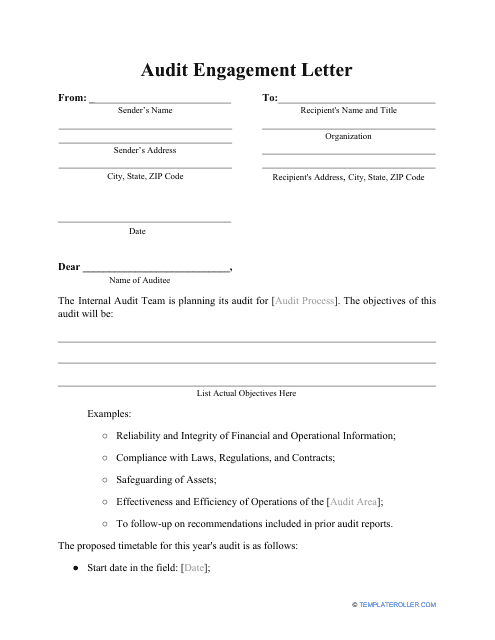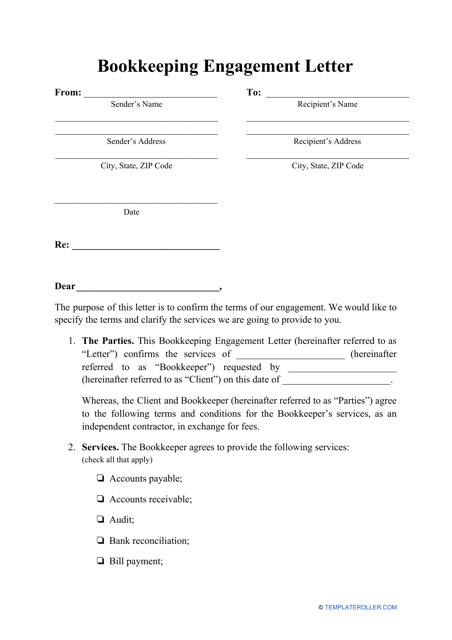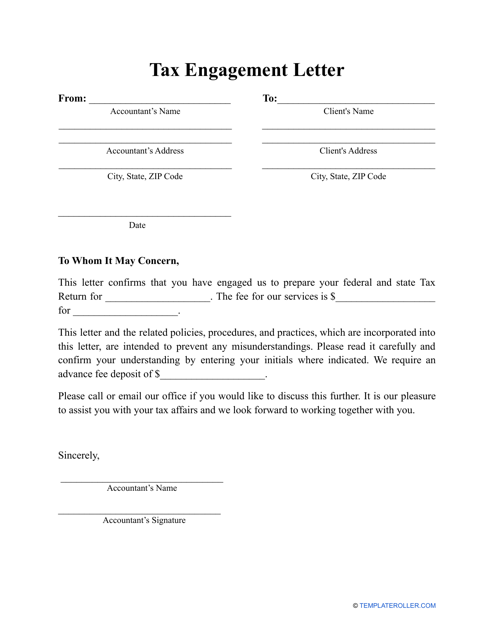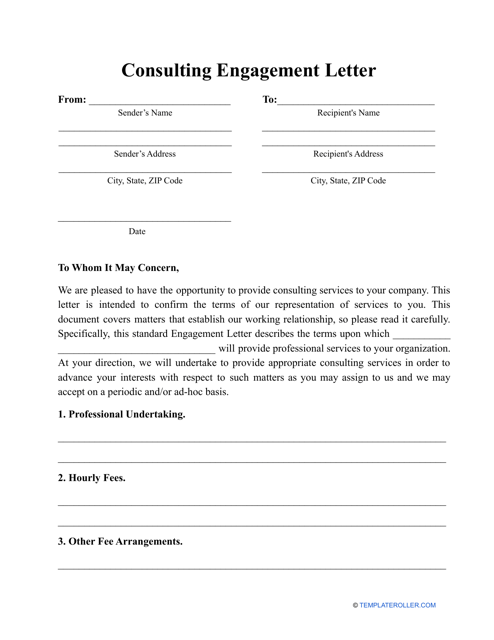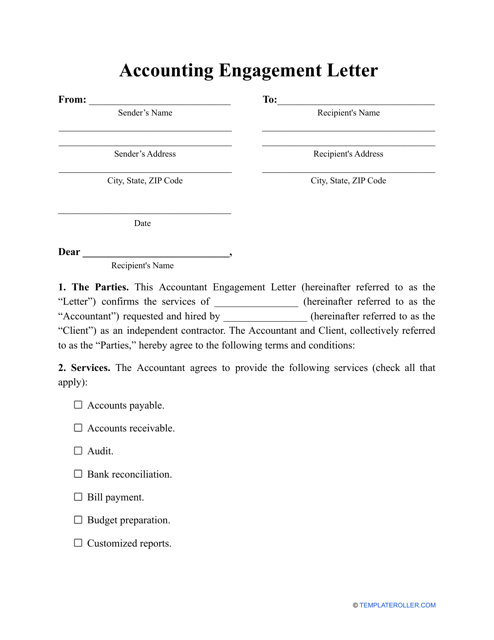Engagement Letter Templates and Samples
What Is an Engagement Letter?
An Engagement Letter is a document that is supposed to be used when a company that provides certain services wants to outline the main terms and conditions of their relationship with their clients. The purpose of the document is to describe the relationship that the company and the client are about to enter.
Generally, a legal Engagement Letter is used by companies that provide accounting, legal, bookkeeping, auditing, and similar services. The letter is presented in the form of an agreement, in which the company outlines the services they can carry out and how much they will cost. After the client signs it, the letter becomes legally binding and the involved parties must follow it.
Engagement Letter Types
The most popular types of Engagement Letters are listed below:
- Bookkeeping Engagement Letter. This letter regulates the relationship between the company that provides bookkeeping services and their client, who has applied to receive these services.
- Audit Engagement Letter. Companies can use this document when they want to set the agreement in which the client agrees to receive audit services, while the company agrees to provide them.
- Tax Engagement Letter. In this document, the parties can depict their agreement that is dedicated to receiving services connected with tax returns, tax exemptions, and other types of tax work.
How to Write an Engagement Letter?
Any Engagement Letter should generally include the following information:
- Information About the Client. In the first part of the document, the sender can designate information about their client, it can include their name and address. Properly identifying the client can help to avoid confusion.
- Introduction. Here the sender can introduce themselves and state information about the company on behalf of which they are writing. They can indicate the name and location of the company, as well as the position they occupy in the company.
- Description of Services. Senders can use this part of the letter to depict the services they can provide to the client. It can be presented in the form of a list where all of the services that the parties have agreed on will be included.
- Cost of Services. The sender should clearly state the cost of the services and indicate where it has come from. For the convenience of both parties, the sender can state the cost of each service and the total cost of the services all together.
- Terms of Services. This part of the document can contain a description of how the services will be provided. For example, it can inform the client what they are supposed to do (provide specific documents or access to certain data) if there are any exclusions from the services, how much the extra service will cost, which standards of services will be followed (if applicable), and so on.
- Engagement Period. In this section, the sender should inform the client how long it will take for them to provide the estimated services. For example, the letter can contain a statement that the engagement starts on March 2nd, 2020, and is valid until April 2nd, 2020.
- Client’s Confirmation. The letter can include a section that a client should use to confirm that they understand everything written in the letter. In this section, they should declare that they accept the terms of the document and verify the statement with their signature.
- Signature. To state that everything written in the document is true and correct, the sender can sign the document. The sender’s signature should be validated with the company’s stamp.
A Letter of Engagement template has a very flexible structure. The sender can add other parts to it, such as responsibilities, professional standards, notifications, etc.
Related Letter Tags and Templates:
Documents:
5
This letter documents and confirms the auditor's acceptance of the appointment, the extent of their responsibilities, and the objective of the audit.
The purpose of this letter is to outline the terms and conditions of the bookkeeping services that can be provided by a specific company to their client.
Complete this template to describe the work to be performed, the terms and conditions of performing that work, any limitations, and payment terms to the client.
This template acts as a written document that establishes the scope of services and payment details to be provided by a customer to a consultant.
An accounting firm or a private accountant may prepare a letter such as this and send it to a client to showcase the services they are able to provide and set expectations for the upcoming working relationship with the client.

